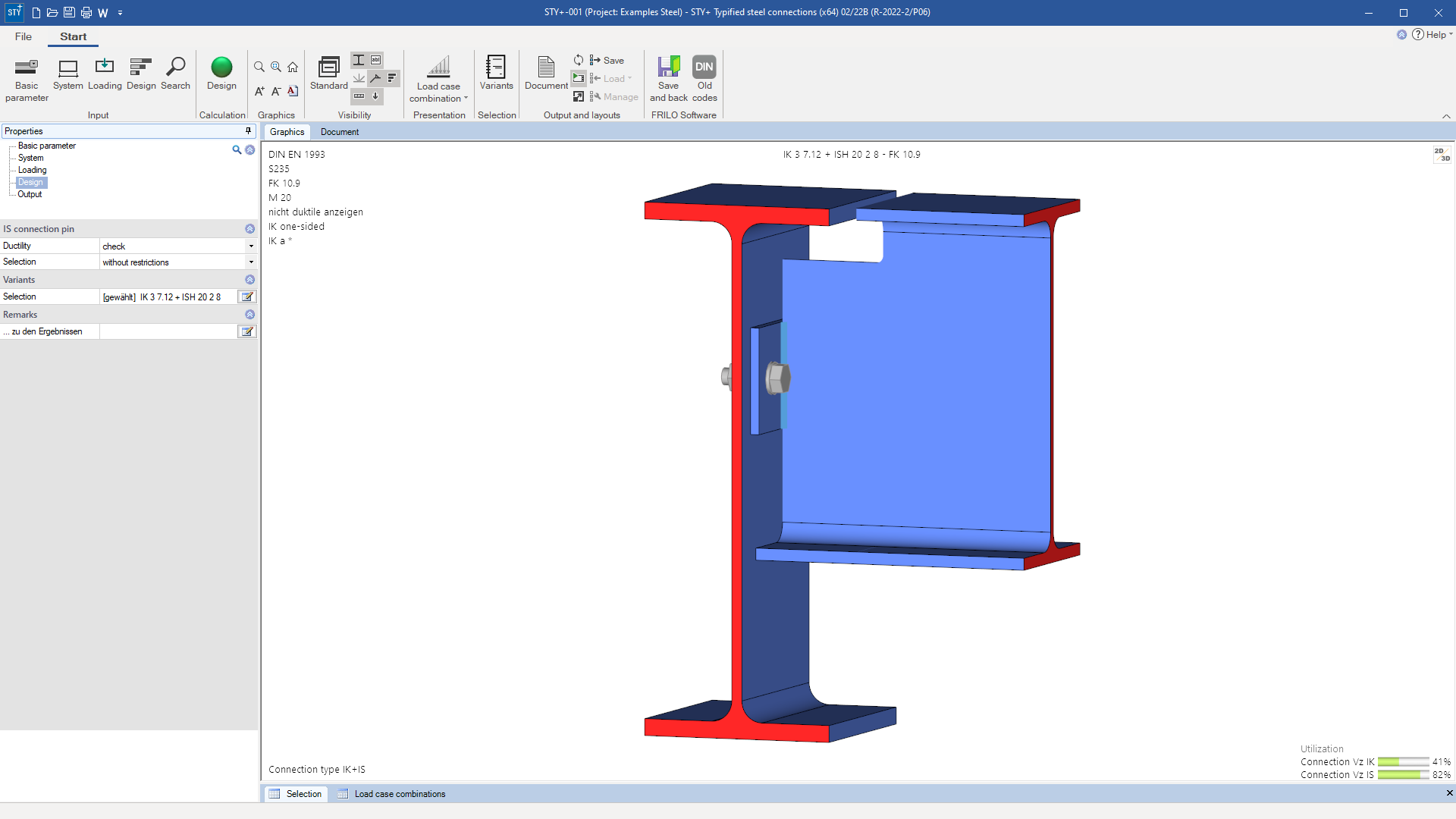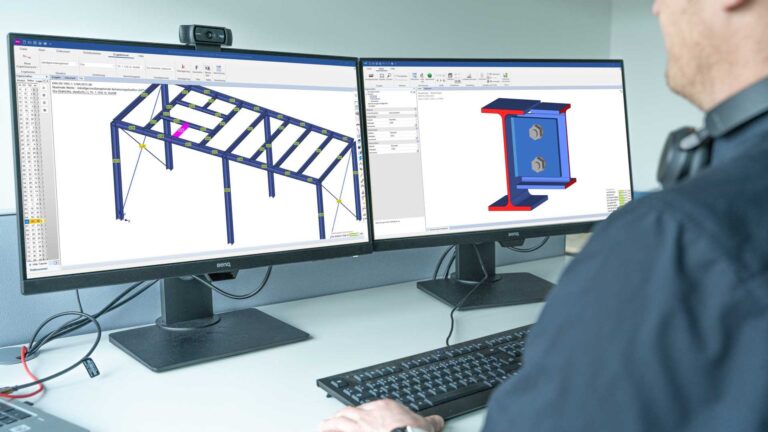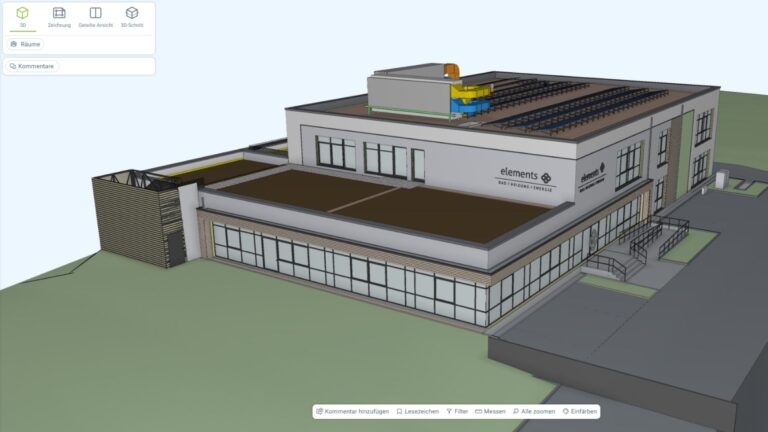Typified standard connections in steel construction
The design tables “Typisierte Anschlüsse im Stahl Hochbau” include moment-bearing beam joints and beam-column connections as well as articulated beam connections. With the FRILO program STY+, these typified connections for I-sections can be verified quickly and easily.

Typified connections in structural steel engineering are connection configurations listed in tables with firmly defined geometry parameters and material parameters. In the design tables, a classification is made according to the load-bearing behaviour of the connections: moment-bearing I-beam connections are distinguished from articulated I-beam connections. In addition, a differentiation is made according to connection types. All geometries, material parameters, load-bearing capacities and design principles for the individual connection types are listed in detail in the ring binder “Typisierte Anschlüsse im Stahl Hochbau”.
The structural systems
For the end plate connection to be dimensioned, the corresponding connection type is first selected: Is the connection flexurally rigid (type series IH) or articulated (type series IS)? If there is a moment-resisting IH girder connection, the user can choose between the design as a girder joint or as a girder-column connection. In addition, the shape of the end plate (flush, projecting on one or both sides) can be defined. If, on the other hand, there is an articulated IS girder connection, the user can take into account the load-bearing component (plate, girder or support), the arrangement of the end plate (central or top) and any notching required (on one or both sides).
Material and cross section
Structural steels of grade S235 and S355 are available for the steel strength of the profile and the other connection parts. The selection of the I-cross-sections of beams as well as the load-bearing components, the bolt diameters and strengths is controlled depending on the selected connection type.
The load
The load can be entered as a list of load combinations with the corresponding design values of the internal forces. Alternatively, the direct specification of the respective decisive component of all internal forces is possible.
The dimensioning
The program uses the DSTV catalogue for dimensioning, which corresponds to the ring binder “Typisierte Anschlüsse im Stahl Hochbau” (2013 edition). The load-bearing capacities of the connections shown in it were calculated using the component method, in which the connection is broken down into its individual basic components. For each of these components (e.g. column web under tension or bolts under tension), their load capacity is determined. The total stressability is then obtained by putting the individual components together.
The output
In addition to the clear and verifiable representation of the verification, the output document contains all input values in tabular and graphic form. Furthermore, the alphanumeric code of the verified connection (e.g. IH 4.1 B 30 20) is output. The scope and form of output of the system graphics can be controlled by the user.




